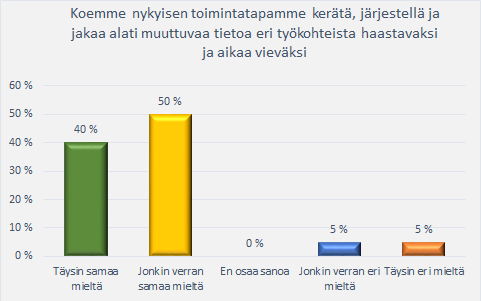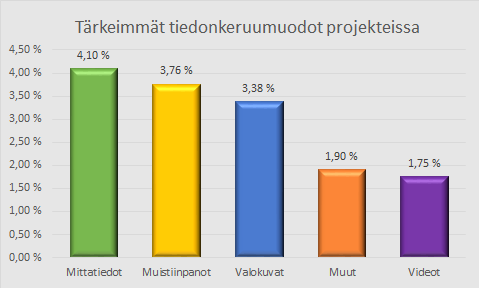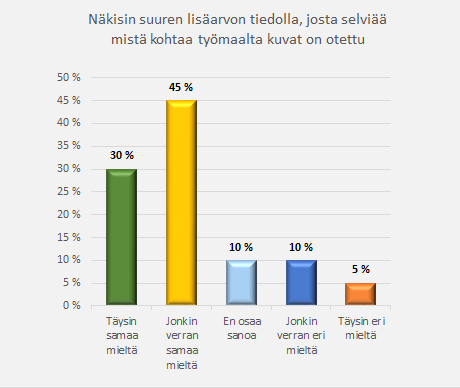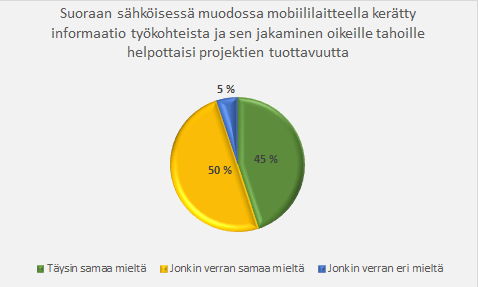Below are excerpts from a survey commissioned at the end of 2016, in which we aim to map how companies making site visits and their staff see digital options for collecting site data.
Below is the first part of the results of this study. Through the survey, we sought to confirm our own hypotheses. The outcome of the survey and the responses confirmed our assumptions.
… but Mikko wants to use paper and pen” – This was the answer of one interviewee when asked about the ease of use of digital solutions.
CONCLUSION
Digital data collection methods, as well as documentation systems, are very widely needed in the field (site visits) to facilitate repetitive work.
However, digital solutions need to work really simply, just as easily as paper and pen.
Most digital solution providers make the same mistake over and over again: They believe, in medieval terms, that a digital knight should be able to solve all the world’s problems.
This results in a complex and difficult-to-use application that is hurled to the ground after the first 5 seconds of use.
”That’s why we set out to develop a digital data collection application that rivals paper (A3 to A0), pen (just about all pens), printers, and site folders. – Aki Vänskä
You can read below how we have come to this conclusion.
SUMMARY
1.“Collecting, organizing and sharing information on site is challenging and time consuming”
- 55% of respondents still collect answers mainly with pen and paper
- Almost everyone, 90%, finds the current way of collecting, organizing and sharing information about jobs challenging and time consuming.
2. “Site data and their collection formats are error-prone and unclear”
- the most error-prone forms of data collection are the most important to the project
- 75% would like more information about the photos taken at the construction site, e.g. where the picture was taken
3. “Storage, collection and sharing of information by electronic means”
- 60% would preferably save the floor plans on a mobile device before visiting the site
- 90% believe that information collected and shared electronically will facilitate project productivity
4. “DOTAG would be suitable for our company”
- 60% see a Dotag type application suitable for their company
Want to see how Dotag, the simple data collection application works? Click here for a demonstration.
SURVEY RESULTS
1. “Collecting, organizing and sharing information on site is challenging and time consuming”
- At construction sites, data is still collected in the traditional way using pen and paper (55% of respondents fully or somewhat agree)
- 45% also use other methods in addition to the traditional ones mentioned above.
- 90% of respondents find the current way of collecting, organizing, and sharing ever-changing information about different jobs challenging and time-consuming.
- In an industrial environment, there is a need for easy and simple ways to operate with the least possible error.
- By modifying and digitizing these processes, savings are made and the number of errors is reduced.

- 90% of respondents find the current way of collecting, organizing, and sharing ever-changing information about different jobs challenging and time-consuming.
- In an industrial environment, there is a need for easy and simple ways to operate with the least possible error.
- By modifying and digitizing these processes, savings are made and the number of errors is reduced.
2. “Site data and its collection formats are error-prone and unclear”
- Measurements, notes and photographs are considered to be the most important forms of data collection in projects.
- The information that is most sensitive to error is also the most important. Measurement data is especially prone to errors.

- The majority, a total of 75% of respondents, feel that they get added value from information that clearly indicates where the picture was taken. – Seperate (??) images after a site visit are difficult to combine with real notes.
- This cumbersome and time consuming work is easily avoided with a mobile data collection application.

3. “Storage, collection and sharing of information by electronic means”
- Almost all respondents (95%) fully or somewhat agreed that digital data collection would facilitate project productivity.
- Most respondents believe that saving site drawings to a mobile device before visiting a site would make their job easier.
- 65% of respondents are fully or somewhat willing to save drawings on a mobile device before visiting a construction site.

4. “DOTAG would be suitable for our company”
- Companies want a change in operating methods.
- 60% of respondents fully or somewhat agree that the introduction of a Dotag-type data collection and communication application could be suitable for their company.
- Those in the so-called grey area make up about 30%.
- They do not necessarily have a clear position, for or against, so experimenting with different approaches and thus changing them can happen quite easily.
- Respondents who disagree completely (5%) tend to have higher resistance to change than those in the gray area.
- Cultural change in the digital age does not happen in companies in an instant. Achieving change in a company requires a change in attitude and a lot of times, large investments.
CUSTOMER SURVEY SETUP AND METHOD
CUSTOMER SURVEY ON THE DOTAG MOBILE APPLICATION
A customer survey conducted in 2016 regarding DOTAG mobile application gathered information on the methods of collecting and sharing site notes and mapped out the possibilities for the mobile data collection application.
The results of the survey were not surprising, as most respondents still use traditional practices and are perceived as laborious and error-prone.
Changes in practices are desired, but there is some doubt that a completely new kind of mobile application will work without experimentation.
Read more about our blogs here!



